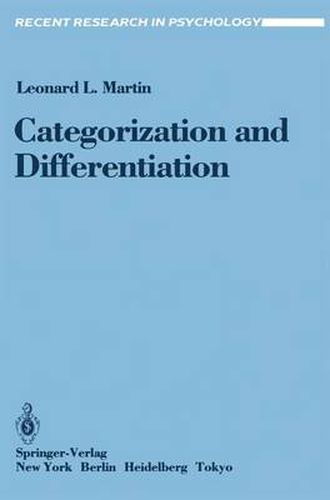Readings Newsletter
Become a Readings Member to make your shopping experience even easier.
Sign in or sign up for free!
You’re not far away from qualifying for FREE standard shipping within Australia
You’ve qualified for FREE standard shipping within Australia
The cart is loading…






This title is printed to order. This book may have been self-published. If so, we cannot guarantee the quality of the content. In the main most books will have gone through the editing process however some may not. We therefore suggest that you be aware of this before ordering this book. If in doubt check either the author or publisher’s details as we are unable to accept any returns unless they are faulty. Please contact us if you have any questions.
In the context of interpersonal interaction, it is possible to characterize human beings as complex sources of information. When interacting with one another, people in tentionally, as well as unintentionally, emit cues which other people can use as a basis for generating inferences and forming impressions about them. As a rule, the informa tion that one receives about another person is complex, mutable, and multidimensional. Often, it is contradictory. One of the more enduring lines of investigation in social psychology has been concerned with understanding the processes whereby people mold such diverse information into a single, unified impression. The linear approach The most influential approach to this issue in recent years has been Anderson’s information integration theory (e. g. , Anderson, 1974). The goal of this approach to im pression formation is the formulation of an algebraic model which describes the relation between stimulus input charac teristics and reported judgments. According to information integration theory, a stimulus is characterized hy two parameters: scale value and weight. The scale value of a stimulus represents the perceiver’s subjective response to the information on the dimension of judgment (e. g. , good-bad, light-heavy, like-dislike). The weight of a stimulus is its importance or relevance to the judgment. It is perhaps best conceptualized as the proportion that each element of a compound stimulus contributes to the overall evaluation of the compound.
$9.00 standard shipping within Australia
FREE standard shipping within Australia for orders over $100.00
Express & International shipping calculated at checkout
This title is printed to order. This book may have been self-published. If so, we cannot guarantee the quality of the content. In the main most books will have gone through the editing process however some may not. We therefore suggest that you be aware of this before ordering this book. If in doubt check either the author or publisher’s details as we are unable to accept any returns unless they are faulty. Please contact us if you have any questions.
In the context of interpersonal interaction, it is possible to characterize human beings as complex sources of information. When interacting with one another, people in tentionally, as well as unintentionally, emit cues which other people can use as a basis for generating inferences and forming impressions about them. As a rule, the informa tion that one receives about another person is complex, mutable, and multidimensional. Often, it is contradictory. One of the more enduring lines of investigation in social psychology has been concerned with understanding the processes whereby people mold such diverse information into a single, unified impression. The linear approach The most influential approach to this issue in recent years has been Anderson’s information integration theory (e. g. , Anderson, 1974). The goal of this approach to im pression formation is the formulation of an algebraic model which describes the relation between stimulus input charac teristics and reported judgments. According to information integration theory, a stimulus is characterized hy two parameters: scale value and weight. The scale value of a stimulus represents the perceiver’s subjective response to the information on the dimension of judgment (e. g. , good-bad, light-heavy, like-dislike). The weight of a stimulus is its importance or relevance to the judgment. It is perhaps best conceptualized as the proportion that each element of a compound stimulus contributes to the overall evaluation of the compound.